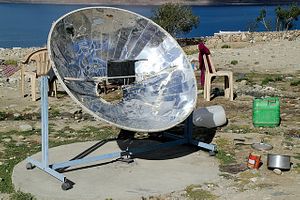With the Bharatiya Janata Party (BJP) leader Narendra Modi decisively winning the general elections held in India earlier this year, speculation over his National Democratic Alliance-led government’s approach toward its “belligerent” neighbor China has been making the rounds in the strategic and media circles of both countries. After all, Modi declared during the election campaign that China must discard its “expansionist mindset.”
Yet post-victory Modi is a man with altered foreign policy goals that have been focused on engagement and cooperation rather than estrangement and confrontation with India’s neighbors. This was exemplified by his gesture of inviting the heads of state of all the South Asian Association for Regional Cooperation (SAARC) nations, including Pakistan, to his government’s swearing-in ceremony.
As for Modi’s policy towards China, it is not expected to deviate significantly from his previous accommodating engagements as the chief minister of Gujarat. Not only did he visit China four times before becoming prime minister, he also managed to bring in substantial Chinese investment to the state of Gujarat.
One area in which Indian and Chinese leadership could take cooperation to a new level is climate change.
During his time in Gujarat, Modi undertook many steps to promote climate change mitigation and adaptation policies. Some of them include a government department dedicated to climate change and a robust state solar mission (even before the launch of the National Solar Mission). Modi even authored a volume on climate change: Convenient Action. The only other political leader to do this was former U.S. Vice President Al Gore.
With this, many started to characterize Modi as a “green crusader,” who might not be an environmentalist as defined by Western intellectuals, but who has certainly made a mark by embarking on a distinctive path that endeavors to view development and environmental protection along a continuum, and not at odds with each other. He has repeatedly made it clear that climate change is “a subject close to his heart.”
The renaming of the environment ministry to include “climate change” (the Ministry of Environment, Forest and Climate Change) is a clear acknowledgement of the new government’s commitment to addressing this issue. This move implies that Modi sees climate change as an issue that is as much domestic as it is international in nature. India needs to deal with several implications of climate change on its soil, while playing a constructive role in the international climate change negotiations.
However, what Modi has also pointed out categorically is that this issue cannot be dealt with by analyzing the environment versus development debate through a Western prism that works in binaries. This perspective looks beyond this narrow debate and pays equal attention to equity and justice. A clean yet diverse energy model is integral to Modi’s development agenda, which primarily focuses on electricity generation and poverty alleviation. The slogan – “Generate More, Use Rationally, Waste Less” – mentioned in the BJP’s election manifesto, signals the government’s attitude toward energy generation for advancing development while underscoring the need for energy efficiency.
The environment and development go hand in hand. For instance, while Modi talks about a “saffron revolution” aimed at energy access and availability for the entire population of India, he equally highlights the promotion of renewable sources of energy, particularly solar energy. Incidentally, the world’s first canal-top solar project (the Narmada branch canal) was commissioned in Gujarat in 2012. Modi’s penchant for solar energy could also be evidenced by the fact that nearly 70 percent of the more than 1000 MW installed in India during the period 2010-12, is located in Gujarat.
This is also something that resonates well with the Chinese context. China is undoubtedly emerging as an international leader in renewable energy, especially solar and wind. With the goal of investing nearly $300 billion in renewable energy in the current five-year plan, it has made its energy plan loud and clear.
This could be a fillip for closer renewable energy cooperation between the two Asian giants. Recently, a green energy park set up by the Chinese based company TBEA was inaugurated in Vadodara, Gujarat. This was made possible by Modi’s efforts in the past as the state’s chief minister to create avenues for partnership in various fields including renewable energy.
A few positive steps have already been on Sino-Indian relations. India’s Commerce Minister, Nirmala Sitharaman during her visit to China signed a memorandum of understanding (MoU) with her Chinese counterpart to invite Chinese investments in India. Similarly, besides possible technological cooperation, India could now look for greater Chinese investment in its renewable energy sector.
A rapid surge in energy demand and the scourge of pollution in both countries, as well as a need for their leadership to play an effective role in building a consensus on the U.N. climate treaty in 2015 at the international level, places them in a position in which cooperation is indeed the best way forward. Modi, who has been portrayed as India’s Nixon, could indeed be a game-changer in Sino-Indian relations.
Dhanasree Jayaram is a PhD Candidate in the Department of Geopolitics and International Relations, Manipal University, Karnataka, India.

































